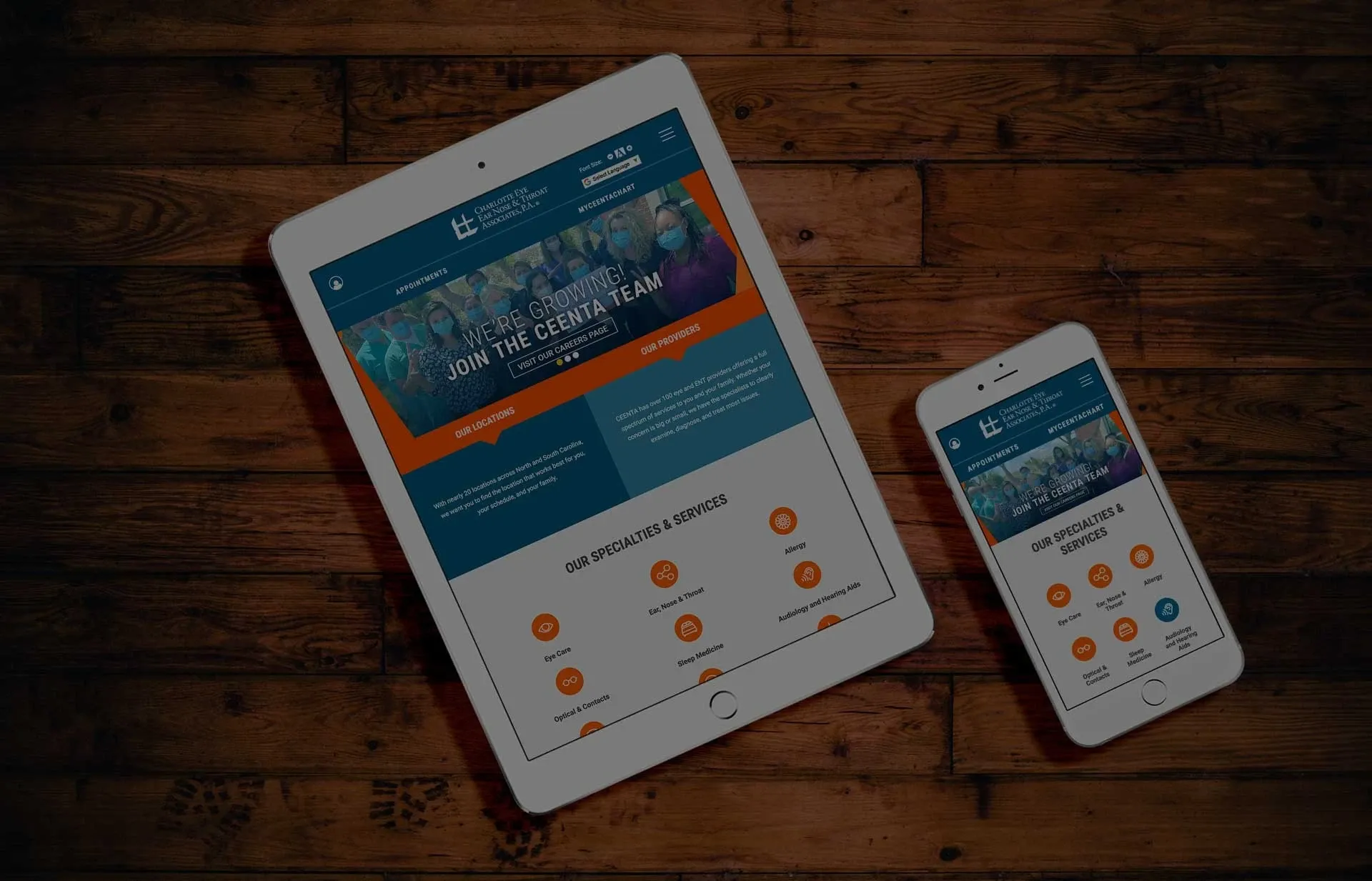Accessibility
“Digital accessibility refers to the inclusive practice of removing barriers that prevent interaction with, or access to websites, digital tools and technologies, by people with disabilities.” - Georgetown Law
There is no way around it; digital accessibility is crucial to remain a high-ranking and first-class healthcare website and organization online. A website that is hard to navigate for a person with barriers of any kind will cause certain groups of people to be completely left out of using the site. Since everyone needs access to healthcare, especially online given the current state of things, this is a non-negotiable when planning a website redesign in 2022 for a healthcare organization.
- Accessibility Tip: Start thinking about accessibility ASAP. We at E-dreamz strive to make sure we have accessibility at the forefront of our design process from the beginning.
Clean UX
A bad-looking website will deter a person from wanting to interact with your practice both online and in person–bottom line. A good UX experience should showcase your brand well and expand across all devices, screen sizes and create an appealing experience for all individuals. For tips on creating award winning healthcare sites, read our recent design blog post here.
Media Center
A news or media center will be good not only for SEO but also for building patient trust and increasing your digital brand across the internet. A media center for a medical website should include but is not limited to: patient stories, company news, events, doctor/staff spotlight, career highlights and industry news. For a great example of a media center be sure to check out the news and blog section on OrthoCarolina.com, a longtime healthcare client and partner of E-dreamz.
Inclusivity
Inclusive design is a design process (not restricted to interfaces or technologies) in which a mainstream product, service or environment is designed to be usable by as many people as reasonably possible, without the need for specialized adaptations.
Inclusivity is a broader term for accessibility but is a mindset your practice needs to get into to stay ahead of the curve in 2022. With inclusivity you will go ahead and start planning on how to include and incorporate everyone into your healthcare organization or practice. And to be honest, inclusivity isn't just important online or on digital platforms--it's very important in person too and how you treat each patient individually once they walk through the door.
Telemedicine
Pre-COVID days telemedicine or telehealth was not used as often but now it is an absolute necessity to provide this service for both safety and pure convenience. How can your healthcare website help with this? By making it clear that you offer these types of consults and services so a potential patient can get started right away. If you are able to add a place to log into the portal to connect with the healthcare provider, this will also be a great benefit to patients.
COVID Policies
Make it clear and easy to understand the current COVID policies in place at your clinic on your website so there is no guessing for patients. Many people go to a website first to check to see what the policies are or if they are requiring a mask or proof of vaccination to be seen.
- Landing Page Tip: Create a landing page for COVID related information so it is easy to navigate or link to from any location on the site.
Trust
Trust is probably the very most important factor that you want to make sure your website exhibits. To build trust you must make sure the UX part of your website is top-notch both from a design standpoint and content standpoint to attract potential new patients, retain old patients and anyone else browsing your site. A few other easy ways to build trust into your website would be: mobile responsiveness, patient testimonials, social media links, doctor credentials/biographies and pictures of your location.
« Back to Blog
- 2025 Outlook: E-dreamz’ SEO Philosophy for the New Year
- 2025 Outlook: Healthcare Web Design and UX Philosophy for 2025
- Latest Launch: Associated Otolaryngologists of Pennsylvania, Inc.
- Latest Launch: Carolinas Center for Oral & Facial Surgery
- Navigating HIPAA Compliance and Web Analytics (2024 Edition)
Ready to Get Started? Contact Us Today to Schedule a Consultation.

© 2025. All rights reserved. E-dreamz, Inc.

